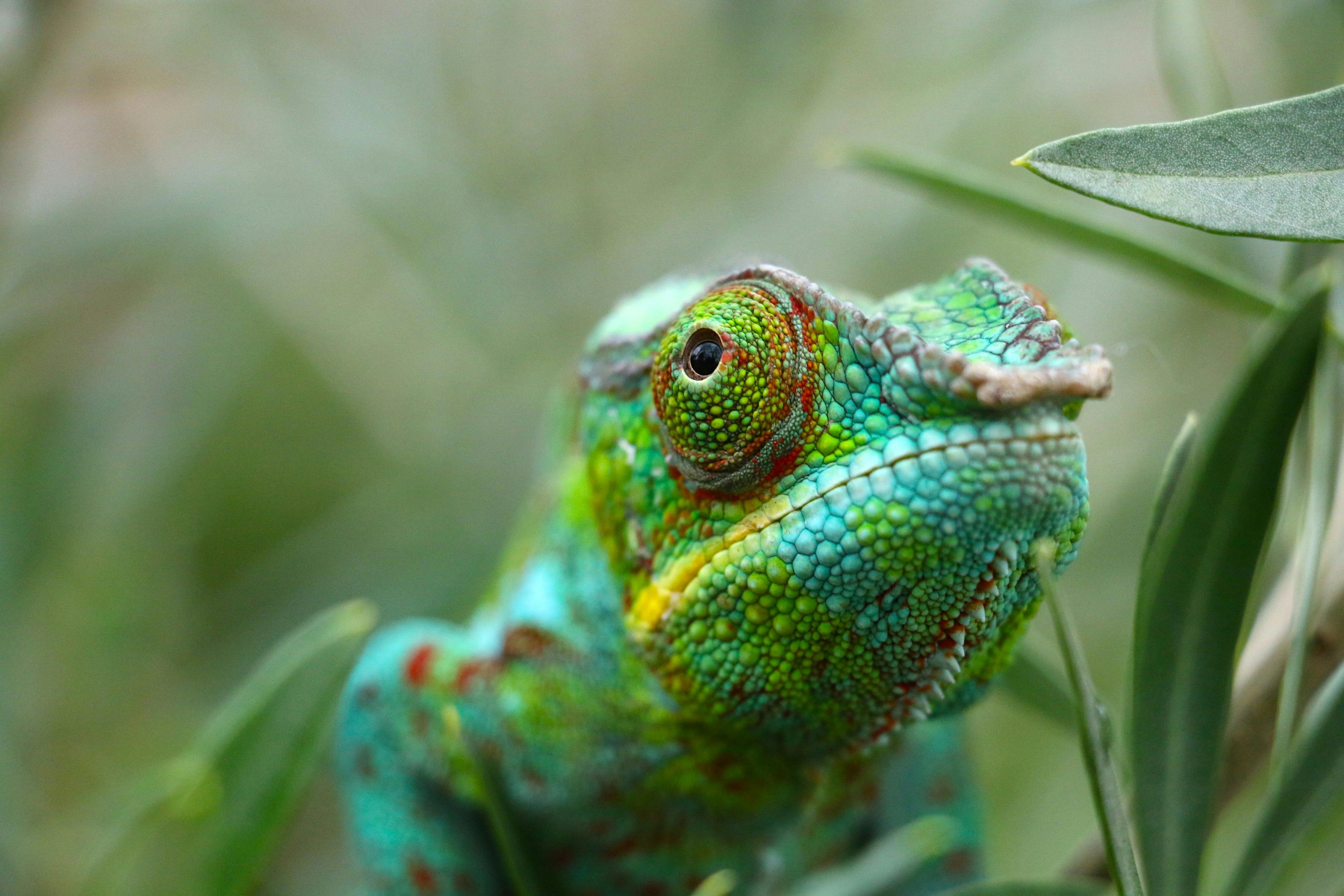
Written by Aurus Sy
Veterinary reviewed by:
Published: 10/12/2021, edited: 10/19/2022
Overview
- Environmental temperature has a say in the gender of some reptiles
- The saltwater crocodile is the largest reptile in the world
- Turtles are some of the only animals that can breathe with their butt.
- The nano-chameleon is likely the world’s smallest reptile.
- Some reptiles swallow rocks for better digestion.
- From neglected pet to Internet star
- Planning to get a pet reptile?
Often misunderstood, reptiles are beautiful and interesting creatures who deserve to be appreciated and respected. They’ve been around for hundreds of millions of years, and there are currently about 10,700 extant species. October 21 is National Reptile Awareness Day—why not celebrate it by learning more about the scaly critters we share the planet with?
Here are five crazy facts about reptiles that you probably didn’t know, plus a heartwarming story about one special lizard!
Environmental temperature has a say in the gender of some reptiles
While the gender of most snakes and lizards is determined by sex chromosomes just like in mammals and birds, most turtles and all crocodilian species are governed by temperature-dependent sex determination (TSD). This means that their gender is determined by the environment after the egg has been laid. In many turtle species, cooler nests produce males and warmer nests produce females. In crocodilian species, low and high temperatures result in females and intermediate temperatures result in males.
The saltwater crocodile is the largest reptile in the world
Named for their ability to tolerate salinity, the saltwater crocodile can exceed 23 feet in length and weigh more than 2,200 pounds. They also have around 66 teeth that can grow up to 5 inches long and possess one of the strongest bites in the animal kingdom—you definitely wouldn’t want to find yourself anywhere near a saltwater crocodile!
Turtles are some of the only animals that can breathe with their butt.
When turtles hibernate, they absorb oxygen from the water through their butt in a process known as cloacal respiration. Oh, and their lungs are located in the top part of their shell, with the shell serving as the ribcage, so no, you can’t take a turtle out of their shell.
The nano-chameleon is likely the world’s smallest reptile.
Discovered earlier this year in the rainforests of northern Madagascar, the nano-chameleon (scientific name Brookesia nana) is just about the size of a sunflower seed. Like other chameleons, this fingertip-sized reptile uses their projectile tongue to catch prey.
Some reptiles swallow rocks for better digestion.
Whether carnivorous or herbivorous, reptiles don’t chew their food, and those that eat plants swallow rocks to facilitate the digestive process. Known as gastroliths, these small stones are held inside the gastrointestinal tract to help grind food. Gastroliths have been found in the fossilized remains of many extinct animals such as herbivorous dinosaurs and marine reptiles.
From neglected pet to Internet star
Winston is a 13-year-old Argentine tegu who lives in Lansing, Michigan with his mom Sarah Curry. On his social media profiles, which have a combined total of 110,000 followers, the black and white reptile can be seen getting treats, playing with toys, attending events, and cuddling with Sarah.
But Winston didn’t always have a luxurious lizard life. In fact, it was quite the opposite. Years ago, he was found abandoned in a box in front of a zoo. He was underweight and had stuck on shed skin on him; fortunately, the zoo took him in and nursed him back to health. Winston spent the next five years living at the zoo until it closed down and all the animals had to go to sanctuaries or rescues.
Sarah applied to adopt Winston despite never having seen him before. According to her, she just had this feeling, so she filled out the paperwork. After passing the interview and home inspection, she was able to bring Winston home, and they’ve been inseparable ever since.
Tegus are known for being docile and very intelligent, but they do have different needs than a cat or a dog. Because of this, it’s not uncommon for pet reptiles to be neglected and left in poor conditions, which is why Sarah shares her and Winston’s experiences to educate people about being responsible with reptiles.
Planning to get a pet reptile?
Sarah believes that most neglected reptile cases are due to lack of knowledge, so she’s a big advocate of research. She herself spent eight months learning about tegus before adopting Winston.
Being a responsible reptile parent means doing your research and knowing your reptile facts to provide the best possible care for your scaly friend. For more info on taking care of reptiles, check out Wag!'s reptile conditions page.
Did you know that Wag! allows non-venomous reptiles? If you need someone to watch your lizard or snake, book a service for your reptile on the Wag! app today!
Comments (0)
Leave a comment
Related articles
About Wag!
© 2025 Wag Labs, Inc. All rights reserved.
About Wag!
© 2025 Wag Labs, Inc. All rights reserved.
Security
© 2025 Wag Labs, Inc. All rights reserved.